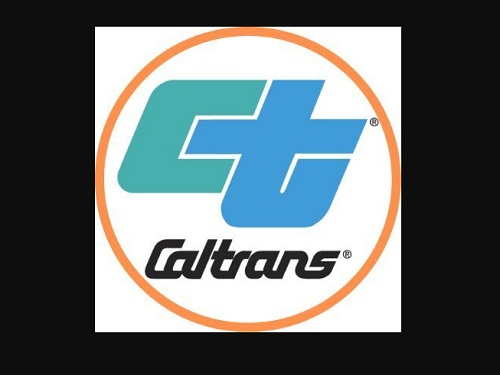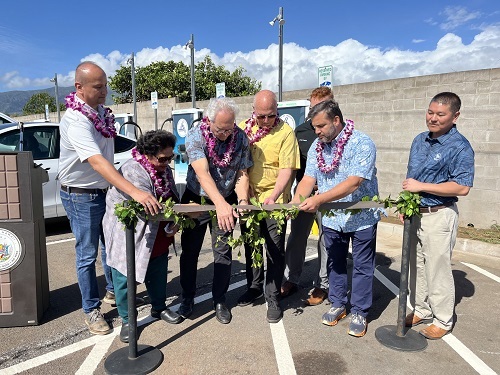FEDERAL ACTION
National Zero-Emission Freight Corridor Plan Unveiled -AASHTO Journal
45 states, large metro areas submit climate action plans under Inflation Reduction Act -EPA (media release)
SOLAR ECLIPSE
Solar Eclipse Preparations -The Stream by AASHTO
Ohio governor signs executive order ahead of total solar eclipse -WLWT-TV
Wyoming Officials Share Lessons Learned From 2017 Eclipse Ahead Of Texas April Eclipse -WFAA-TV
INFRASTRUCTURE RESILIENCE AND SUSTAINABILITY
New Jersey’s transit stations can help spur more affordable housing -WNET-TV’s NJ Spotlight News (video)
San Diego gets first electric tug boat in US -KUSI/KSWB-TV
Coastal US Cities Top Ranking of Climate-Friendly Transportation –CityLab
National League of Cities Launches New Mapping Resource to Support Transit Planning in Municipalities -National League of Cities (media release)
AIR QUALITY
Maryland DOT announces $55 million in federal funding to reduce transportation emissions -WBFF-TV
The Remarkable Potential of Sustainable Aviation Fuel for Carbon Emission Reduction -Greek Reporter
The Role of Hydrogen Fuel Cell Buses in a Zero Emission Future -American Public Transportation Association (webinar)
ENVIRONMENTAL JUSTICE/EQUITY
Caltrans Unveils New Transportation Equity Index Tool -AASHTO Journal
Aging advocates aim to expand public transit across New Hampshire -New Hampshire Bulletin
U.S. Secretary of the Interior Deb Haaland on Environmental Justice and Confronting the Climate Crisis -University of Michigan (livestream)
NATURAL RESOURCES
Wetland and Beaver Dam Water Quality Workshop to be held in Oskaloosa, OK -Oskaloosa Herald
CULTURAL RESOURCES
Washington State DOT’s Paint Maps: The Origin Story -WSDOT Blog
‘Drive with Aloha’ murals educate about drunk driving -Spectrum News
Husband, wife buried on runway at US airport greet thousands of planes every year -Fox Weather
How green is your next vacation? Here’s how to tell –USA Today (opinion)
HEALTH AND HUMAN ENVIRONMENT/ACTIVE TRANSPORTATION
Hawaii DOT Launches Statewide Aviation Noise Study -Island News
To Incentivize E-Bikes, First Map Your Destination -Government Technology
New York City Just Had Its Safest-Ever Year For Pedestrians. What Went Right? –CityLab
$50 Million to Enhance Active Transportation Across British Columbia –Momentum
DC transit officials will give city residents money toward a new electric bike -Washington Times
Coon Rapids, MN awarded state grant for active transportation plan -ABC Newspapers
TRB RESOURCES/RESEARCH/ANNOUNCEMENTS
Advanced Air Mobility and Community Outreach: A Primer for Successful Stakeholder Engagement –ACRP
Advancing Gender Equity in the DOT Workforce –NCHRP
Respectful Response to People Experiencing Homelessness in Transit -TRB (webinar)
Artificial Intelligence Lets Bicycles ‘See’ -Informationsdienst Wissenschaft
FEDERAL REGISTER NOTICES
Ensuring Safe Accommodations for Air Travelers With Disabilities Using Wheelchairs -Office of the Secretary, Department of Transportation (Notice of Proposed Rulemaking)
Notice of Rail Energy Transportation Advisory Committee Meeting -Surface Transportation Board (Notice)
Notice of Intent To Prepare an Environmental Impact Statement for the Proposed Atlantic Shores North Project on the U.S. Outer Continental Shelf Offshore New Jersey -Bureau of Ocean Energy Management (Notice)
Notice of Intent To Prepare an Environmental Assessment for Commercial Wind Lease Issuance, Site Characterization Activities, and Site Assessment Activities on the Atlantic Outer Continental Shelf in the Gulf of Maine Offshore the States of Maine, … -Bureau of Ocean Energy Management (Notice)






